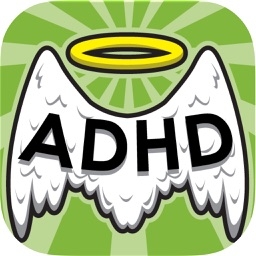Attention Deficit Hyperactivity Disorder (ADHD) is a neurodevelopmental disorder that affects many students in classrooms around the world. Characterized by symptoms such as inattention, hyperactivity, and impulsivity, ADHD can pose unique challenges in the school environment. However, with effective strategies and supportive approaches, both students and teachers can create a positive and productive educational experience. This article explores practical strategies for students with ADHD, as well as methods teachers can use to support these students.
Strategies for Students with ADHD
Organizational Tools and Techniques
Keeping track of assignments, deadlines, and daily tasks can be challenging for students with ADHD symptoms. Utilizing a planner or digital calendar helps in organizing and prioritizing work. Color-coding tasks and setting reminders can further enhance organizational skills.
Large tasks can seem overwhelming. Breaking them into smaller, manageable steps can help students focus and make progress without feeling daunted by the overall workload.
Developing and sticking to a consistent daily routine can provide structure and predictability, which is beneficial for managing ADHD symptoms.
Developing Study Skills
A quiet, well-organized study space can minimize distractions and enhance concentration. This area should be free from interruptions and clutter.
Tools such as flashcards, visual aids, and mnemonic devices can assist in retaining information and improving focus during study sessions.
Engaging with material through methods like summarizing information aloud, teaching others, or using interactive tools can improve retention and understanding.
Time Management
Using timers to allocate specific periods for working on tasks helps in managing time and maintaining focus. The Pomodoro Technique, which involves working for 25 minutes followed by a 5-minute break, is particularly effective.
Identifying and tackling the most important tasks first ensures that critical assignments are completed on time, even if other tasks are left unfinished.
Self-Regulation and Mindfulness
Techniques such as deep breathing, mindfulness, or progressive muscle relaxation can help manage stress and improve focus.
Understanding one's own ADHD symptoms and triggers can empower students to implement strategies that work best for them. Self-reflection and journaling can aid in this process.
Seek Support
Open communication with teachers about challenges and needs can lead to personalized support and accommodations.
Many schools offer resources such as counseling, tutoring, and ADHD coaching. Taking advantage of these services can provide additional support and guidance.
Strategies for Teachers Supporting Students with ADHD
Classroom Environment
A well-organized, predictable classroom environment helps students with ADHD focus better. Clearly labeled areas, consistent routines, and visual schedules can contribute to a more structured setting.
Seating students away from high-traffic areas and using noise-canceling headphones or quiet spaces can help reduce external distractions.
Instructional Strategies
Providing step-by-step instructions and checking for understanding ensures that students grasp what is expected. Visual aids and written instructions can complement verbal directions.
Allowing short breaks for physical activity helps students with ADHD release excess energy and improve concentration. Movement can be integrated into lessons through activities that require physical engagement.
Behavioral Support
Encouraging and rewarding positive behavior rather than focusing on negative behavior helps build self-esteem and motivation. Praise and small rewards for meeting goals can be effective.
Clear rules and consistent consequences help students understand boundaries and expectations. This consistency provides a sense of security and fairness.
Differentiated Instruction
Tailoring instruction to meet diverse learning needs can benefit students with ADHD. This may include using visual aids, hands-on activities, or interactive technology to engage different learning styles.
Flexibility with deadlines can accommodate the varied pacing of students with ADHD. Providing extended time for assignments or assessments can help reduce stress and improve performance.
Collaborative Approaches
Collaboration with families ensures that strategies used at school are reinforced at home. Regular communication with parents can provide insights into what works best for the student and create a unified approach.
Engaging students in setting their own academic and behavioral goals fosters a sense of ownership and accountability. It also allows students to identify and advocate for their needs.
Professional Development
Teachers can benefit from professional development opportunities focused on treatment of ADHD. Understanding the latest research and best practices can enhance their ability to support students effectively.
Conclusion
Navigating ADHD at school requires a collaborative approach involving students, teachers, and families. By implementing strategies that address organizational challenges, enhance focus, and provide supportive environments, both students and educators can work together to create a successful and fulfilling educational experience. With the right tools and techniques, students with ADHD can thrive academically and develop skills that will serve them throughout their lives.



